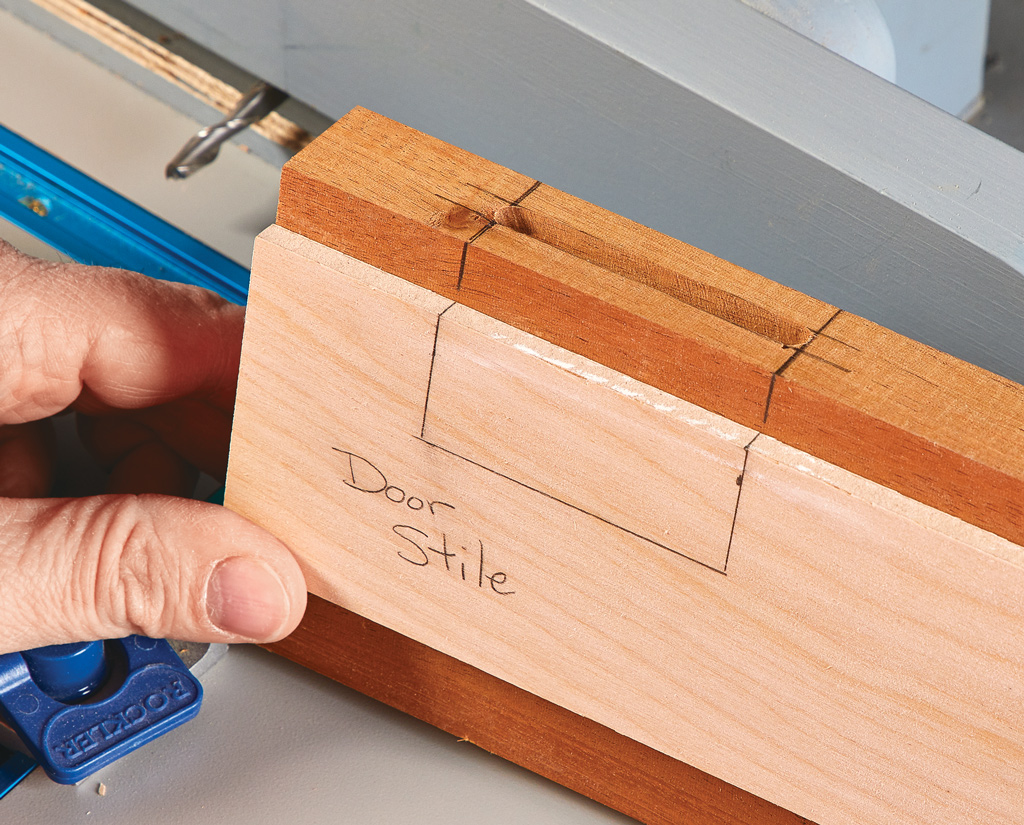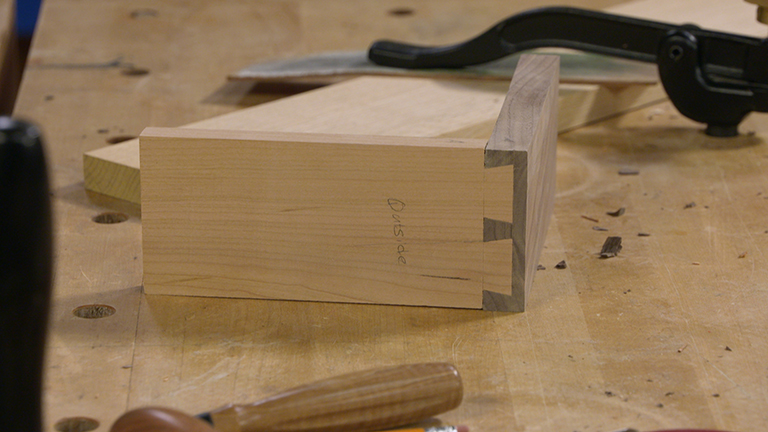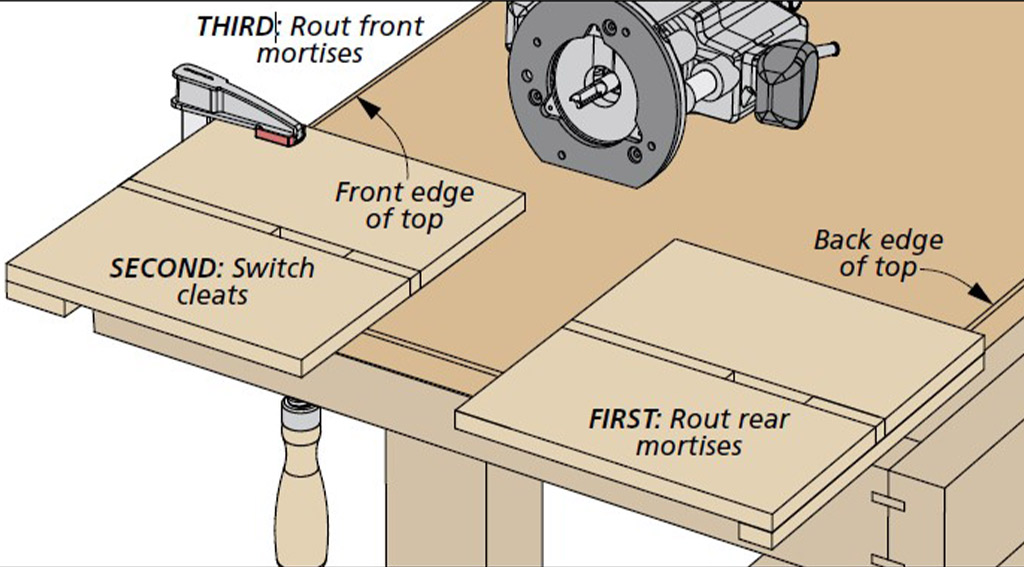Of all the specialized table saw techniques I use, the one I probably turn to most often is cutting clean, accurate tenons with a dado blade. I’ve found that no other method gives me the same high-quality results in a comparable time. Best of all, the setup is easy and the technique can be mastered quickly. Essentially, a wide, stack dado blade does the hard work of removing the waste from the tenon cheeks and shoulders. Carefully adjusting the height of the blade is what gives you a snug fit to the mortise. The workpiece is fed across the dado blade using an auxiliary fence attached to the miter gauge. This gives you firm, easy control and results in clean, square shoulders. Finally, the rip fence is used as an end stop to accurately gauge the length of the tenons.

Once you’re set up, cutting the tenons goes quickly. The tenon cheeks are cut first. I start by using a test piece to adjust the blade height and establish the thickness of the tenons. (This can be the tip of one of your workpieces.) You’ll want to have a mortised workpiece close at hand to check the fit. Your “stub” tenon should be a pretty snug fit at this point. You’ll also need to adjust the position of the rip fence to gauge the length of the tenon. Set the fence to cut just shy of the shoulder line and make a pass. Then tweak the fence position until the cut falls right on your line. Now, work back toward the end of the tenon with multiple passes to remove the remaining waste on the cheek.

The dado blade often leaves small ridges on the tenon cheek. A quick way to remove these is to slide the workpiece sideto- side across the “high point” of the blade. Move the workpiece forward slightly between each pass to knock down the ridges. The opposite cheek can be cut exactly the same.

Once all the tenon cheeks have been cut and smoothed, you complete the tenons by cutting the top and bottom shoulders. You may have to readjust the blade height to properly size the width of the tenon. To remove the waste, I start with a cut at the end of the tenon and work back toward the shoulder. This has two benefits. You’ll be much less likely to chip the corners of the tenon by cutting away waste that’s still supported on the shoulder side. Second, you can ensure that all four shoulders will be perfectly aligned by making the shoulder cuts with a final light pass. Then if necessary, smooth the face with a “sideways” pass or two. After cutting the top and bottom shoulders, the tenon is ready to meet its mortise.













